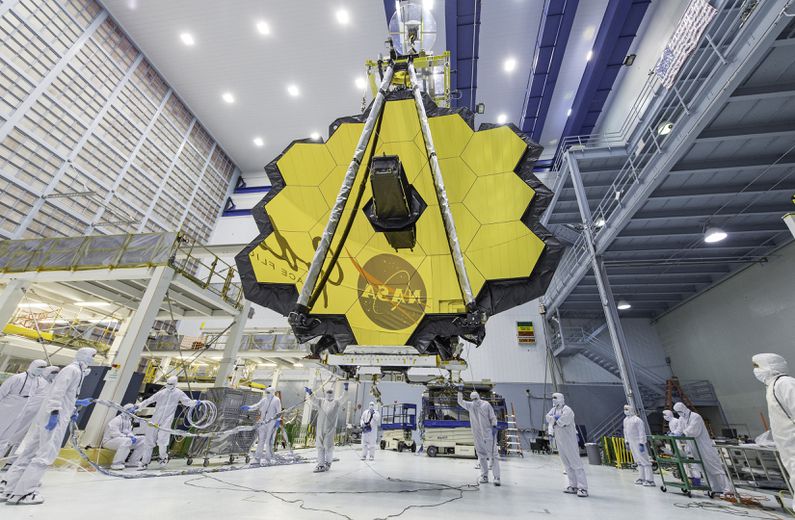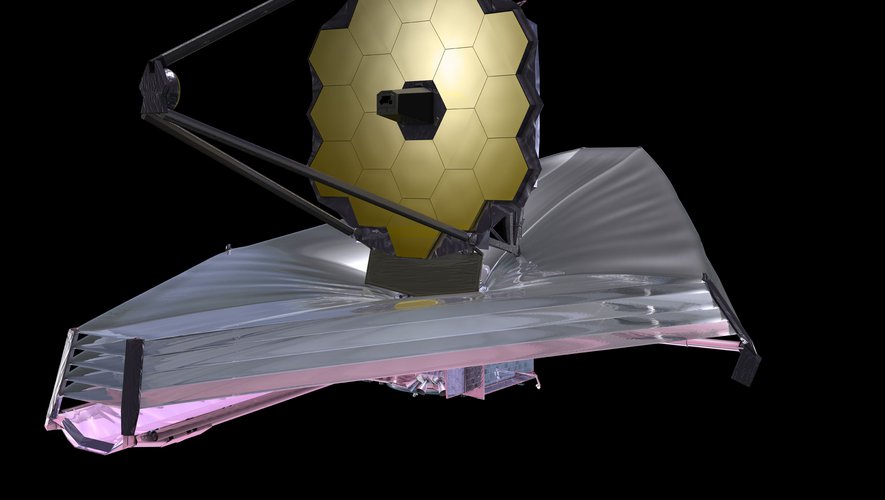Bazet’s Mersen Boostec has produced several parts for NASA’s James-Webb Telescope, which will replace Hubble, 1.5 million kilometers from Earth. If the satellite left Earth less than a month ago, the parts were designed at Bigorre nearly fifteen years ago. “Pride” of the site.
From the launch of the program at the Boostec plant in Bazet to the launch of the James Webb Giant Telescope on December 25, fifteen years have passed. A trifle on a universe scale, but years of waiting for Bazet employees, some of the employees who worked on this project are no longer on board today. Never mind, the staff proudly welcomed the Christmas gift. “Even if the site is closed over the holidays, we have followed up on this delayed launch. We are very proud to be part of this adventure and to contribute to the largest telescope ever sent into space,” said Mersen-Boostec Operations Director Jerome Lavinac.

It was Ariane who launched the telescope’s elements on December 25. / NASA photo
The Bazé site made a significant contribution to one of the four silicon carbide instruments on the back of the Large Telescope, the NIRSpec spectrometer developed by Airbus on behalf of the European Space Agency. Jerome Lavinac explains: “This represents several pieces including an optical bench, and three telescopes of three mirrors each, which were manufactured here between 2006 and 2009. It was a long-term project that mobilized all the teams, from manufacturing raw materials on site Our own production in Lanemisan, to manufacturing and heat treatment, not to mention corrections and checks … It was a big project from this period with the Gaïa and Sentinel 2 satellites.
‘big project’
Thanks to its extreme thermomechanical stability, silicon carbide has been selected for this instrument, while maintaining a temperature of – 230 ° C which will be able to provide the infrared spectrum of more than a hundred extraterrestrial objects such as stars or galaxies, with exceptional accuracy. That is why silicon carbide has even seduced NASA, which developed this James Webb Space Telescope, in cooperation with the European and Canadian space agencies. “We delivered the parts more than ten years ago. It was then necessary to integrate them in Germany, test them, send them to the United States, do new tests, and integrate them. Even today, a month after its launch, the telescope has not yet reached the Lagrangian point, 1.5 million kilometers from Earth where it will take over from Hubble. It will make it possible to study their formation and evolution, only a few hundred million years after the Big Bang, while exploring the atmospheres of exoplanets outside our solar system. Jerome Lavinac admits: “It is a huge scientific project Explains the gap between the production of parts and their forthcoming launch into orbit.”

James Webb Telescope at NASA Workshops. / NASA photo
For Mersen-Boostec, the space adventure continues with a new project, the Copernicus programme. Not forgetting the ELT, the largest ground-based telescope, operated by the European Southern Observatory and which should record its first lights, in the Chilean desert, in 2025. To infinity and beyond…

“Music guru. Incurable web practitioner. Thinker. Lifelong zombie junkie. Tv buff. Typical organizer. Evil beer scholar.”






More Stories
A large manufacturing project awaits space in the industrial zone
According to science, here are officially the two most beautiful first names in the world
Green space, 100% pedestrianized: DIX30 reinvents itself